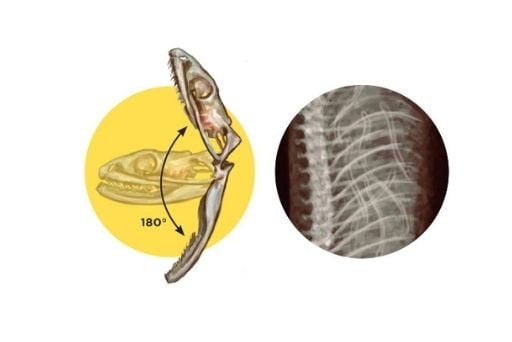All about the Titanoboa (titanoboa cerrejonensis) for you to know
Prehistoric times seem magical to the modern world. Everything was so different, and we wonder how things changed so ferociously. From animals, trees, to even birds, everything has changed. Earlier, animals were gigantic, and if humans ever existed, they would be too tiny to compete. But today, it’s the other way round. But during this unique transformation, we have also lost many animals in the past that we will never be able to see again. It’s a pity! One of them is the Titanoboa (Titanoboa cerrejonensis).
The Titanoboa is an extinct species of snakes that lived around 58 to 60 million years ago. They are said to be present during the Pliocene period and were found mainly in Columbia. Scientists are still trying to figure out whether they were related to modern-day anacondas and snakes. These snakes were roughly 14 meters in length and featured a weight of 1000kgs. Their girth was more than 3ft, and it was the thickest part of their body. But that is not all.
Let us help you find out more about the Titanoboa (Titanoboa cerrejonensis) and their lifestyle in prehistoric life.



Appearance
They were deadly-looking snakes with thick bodies. In 2002, some scientists found out that one Titanoboa (Titanoboa cerrejonensis) had three skulls. This was a shocking revelation, and research continues on the same. It is said that these snakes mostly spent their time underwater as their bodies were so thick. These are ectothermic animals, so they were not able to regulate temperature. That is why they were dependent on external heat to stay alive.
In time, these cold-blooded snakes went on to become more extensive in size. So, they were pretty similar to that of modern-day anacondas and snakes.

Habitat
Titanoboa (Titanoboa cerrejonensis) majorly lived in the swamps in the murky waters. They majorly lived in these places to hide and wait for any animal to feast on. When animals came here to drink water or relax, they suddenly attacked them and ate them away to quench their cravings. Since they are very slow, they did not benefit much from the drylands. So, they hated to be in drylands. These were primarily found in the Columbian regions and underwater, where they could hold their breath for about forty-five minutes approx. Much is still to be known about their habitat, though.

Dietary habits
Like any other snake or anaconda, Titanoboa (Titanoboa cerrejonensis) had a versatile diet. They mostly feasted on crocodiles, though, which is not common among other reptiles. Since crocodiles are giant, these snakes could do without eating for up to a year after eating them. They also feasted on hard-shelled turtles that snakes cannot consume even today. They also loved to feast on fishes on usual occasions.
However, we are yet to discover more about their eating habits. Since there was no sign of dinosaurs back then, these creatures could evolve as the top predator in their food chain. They are also quite venomous, so it was best to stay away from them. But they were also ambushed, predators. So, when they tried to catch hold of the prey, they would go forward at an incredible speed. This made it difficult for the victims to escape on time. It also had a constricting force of 400lbs per square inch, which matters worse.


PHOTO OF THE FLORIDA MUSEUM -JEFF GAGE

Fossil records
Many fossils of Titanoboa (Titanoboa cerrejonensis) have been found in previous times that have helped scientists unleash a great deal about these creatures. It not only quenches our curiosity but also feeds our fascination for these snakes from the prehistoric era. Many fossil records give us clues about how they may have occurred due to climate changes. Since the earth’s temperature was quite warm at that time, these cold-blooded animals could settle better.
But many scientists also believe that it was due to the climatic change that they got extinct in the first place. Declining global temperatures made them decrease with time and expire after a specific period. Other scientists argue that it could have been the product of habitat change. Although much is to still know about, scientists are not losing hope. During the research, the remains of around 30 of its species were found. Most of them were adults, and they were made of vertebrae and ribs. Scientists discovered only one complete specimen with a skull during those days. To date, we have never found such a massive snake in our life.

The bottom line
Over the years, several researchers have come together to make discoveries about this giant snake. They are still looking to find out more exacting reasons for its extinction and how they looked in the first place. Although such discoveries were a bit more challenging previously, we are sure we are only an inch away with the new technology. So, let’s hope for the best.




